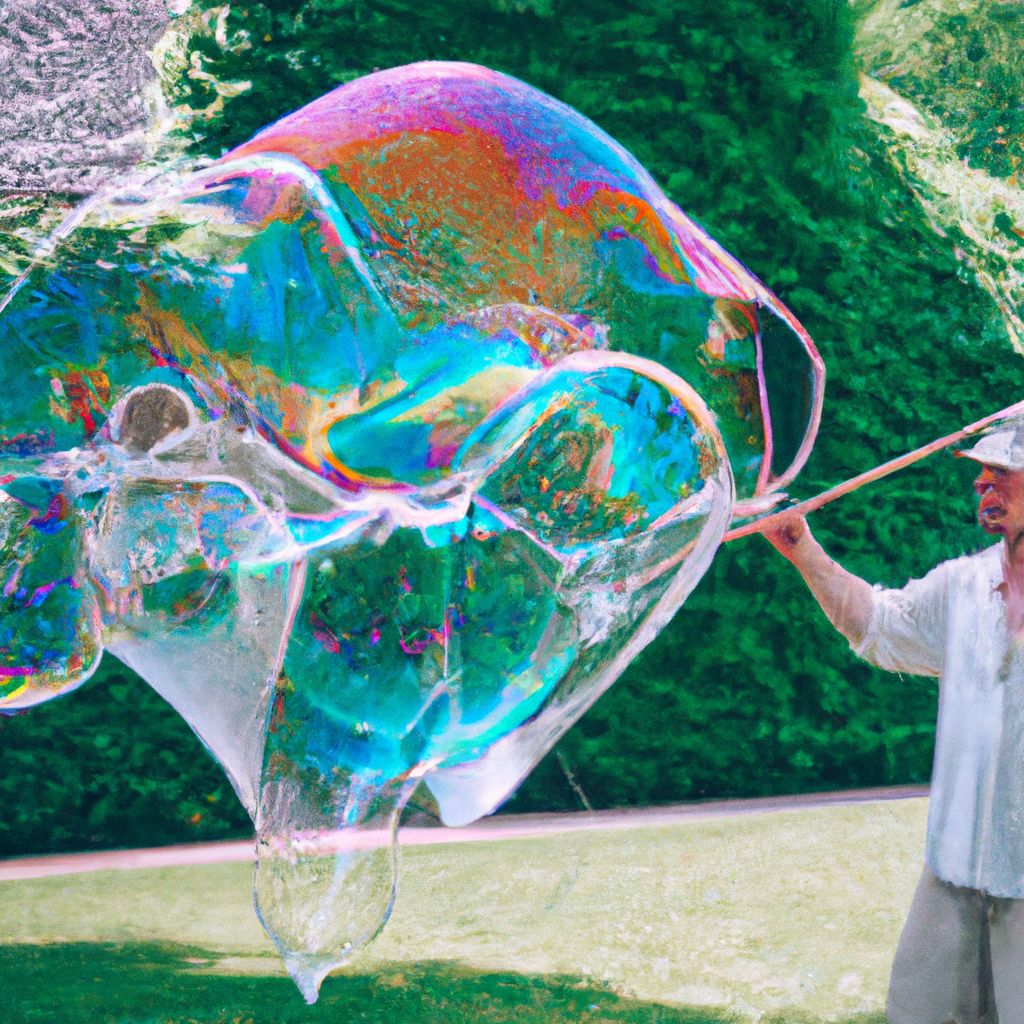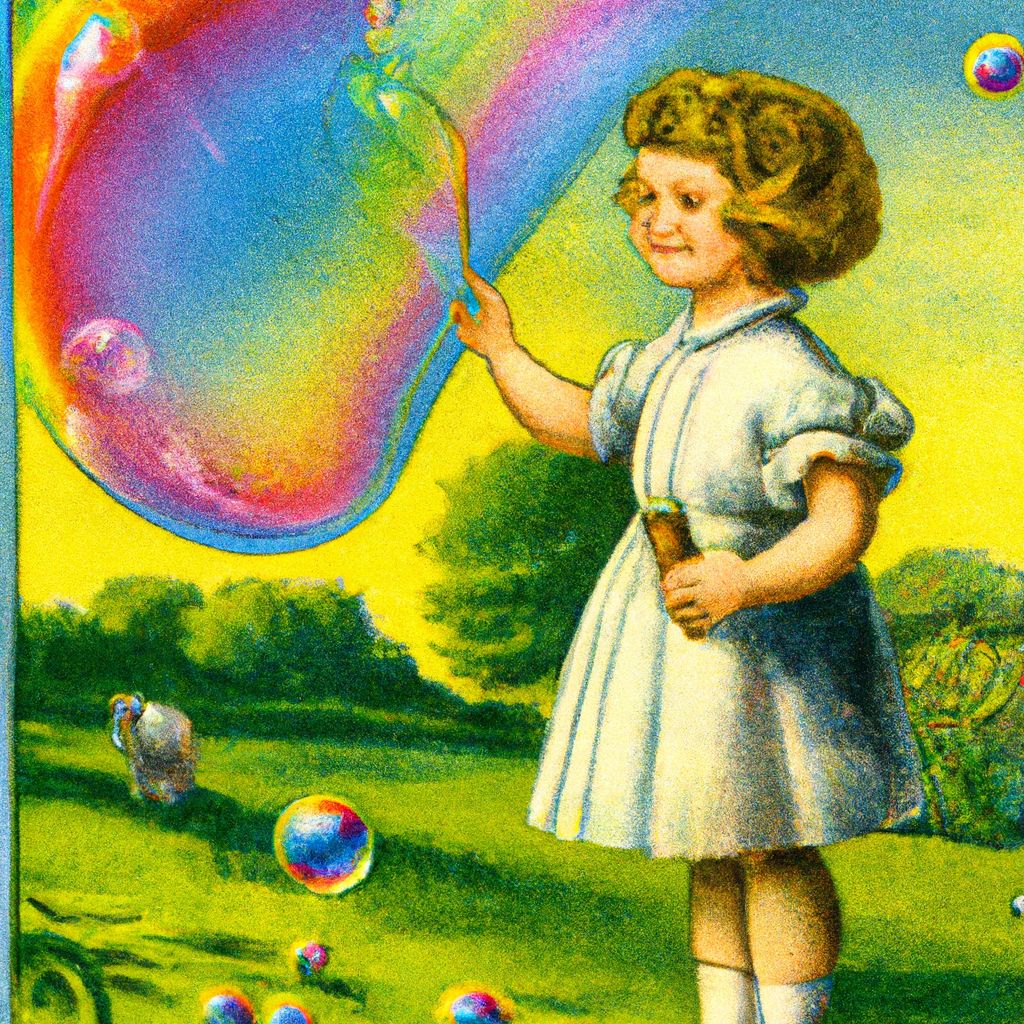- Bubble Blowing: An Overview
- The Origins of Soap Bubbles
- Bubble Blowing in Art and Literature
- The Science of Bubble Blowing
- Bubble Blowing as Entertainment
- Commercialization of Bubble Blowing
- Innovations in Bubble Blowing
- Bubble Blowing in Popular Culture
- The Therapeutic and Educational Uses of Bubble Blowing
- The Future of Bubble Blowing
Bubble Blowing: An Overview

Bubble blowing, a whimsical activity enjoyed by people of all ages, transcends cultures and generations with its simple, ephemeral beauty. The act of creating delicate spheres that float and shimmer before vanishing into thin air has captivated humans for centuries. This universal appeal lies not only in the visual enchantment of bubbles but also in the joy and wonder they evoke, often rekindling the innocence of childhood.
In this exploration, we delve into the rich tapestry of bubble blowing's past, tracing its origins and the remarkable journey through time. The scope of the article is to unearth the historical context in which bubble blowing emerged and to chart the evolution of this enchanting pastime. From ancient rituals to modern-day entertainment and scientific applications, we will uncover the multifaceted legacy of bubbles and how they have been blown, admired, and studied throughout history.
The Origins of Soap Bubbles
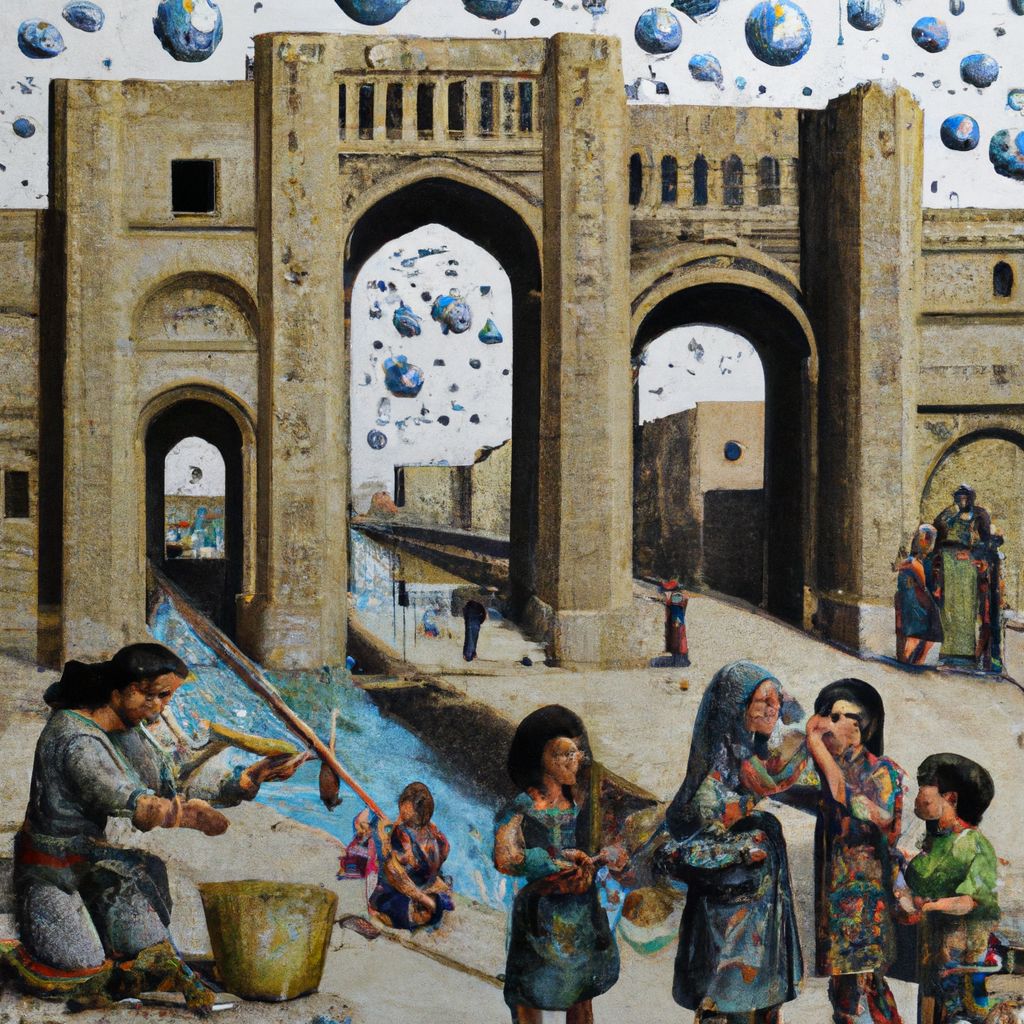
The humble soap bubble, in its glistening simplicity, has a history that is as rich as it is ancient. The first recorded instances of soap bubbles date back to the art and literature of the early A.D. centuries. However, the use of soap itself has roots in ancient civilizations, such as Babylon around 2800 B.C., as well as in ancient Egypt where a soap-like substance was made from animal and vegetable oils with alkaline salts.
While the specific inception of bubble blowing is shrouded in the mists of time, it is conceivable that the early methods of creating bubbles were serendipitous. People might have discovered the captivating spheres while cleaning garments or during the course of other soap-related activities. It is hypothesized that the earliest bubble blowers likely used their hands or simple tools like straw stems to create these enchanting forms.
Ancient texts and depictions also suggest that soap bubbles may have been used in rituals and children's games. Though the detailed methods of these early bubble creations are not thoroughly documented, the joy and fascination they sparked were certainly the precursors to the bubble blowing we know and cherish today.
Bubble Blowing in Art and Literature

Bubbles have transcended the realm of play, embedding themselves into the cultural fabric through art and literature. They have come to symbolize beauty, the fleeting nature of life, and the unadulterated innocence of youth. In the 17th century, Dutch and Flemish painters, such as Jan van Eyck and Frans Hals, incorporated bubbles into their works as vanitas symbols, representing the transience of life and the futility of earthly pursuits.
Perhaps one of the most famous paintings featuring a soap bubble is 'Soap Bubbles' by Jean Siméon Chardin, dating to 1733. This work captures a young boy blowing a bubble, with the delicate sphere reflecting the light and the environment, emphasizing the fragile and temporary nature of human endeavors.
In literature, references to bubbles can be found in poetry and prose, where they often underscore themes of ephemerality and the fleeting moments of happiness. For instance, Shakespeare, in 'The Tempest', alludes to the brevity of life with the line "We are such stuff as dreams are made on; and our little life is rounded with a sleep." Bubbles in this context are metaphors for the dream-like, transient aspects of existence.
Children's stories and nursery rhymes also celebrate the simple joy of bubble blowing, embedding this activity deeply in the cultural representation of childhood. The act of blowing bubbles captures the imagination, representing a momentary escape from reality that is cherished in both visual and written forms.
The enduring presence of bubbles in art and literature not only reflects their aesthetic and symbolic richness but also reaffirms the timeless fascination that humanity holds for this simple yet profound phenomenon.
The Science of Bubble Blowing

The enchanting process of bubble blowing is underpinned by fascinating scientific principles. At the core of bubble formation is the concept of surface tension, the cohesive force among liquid molecules that imparts the liquid its elastic property. When you blow air into a soap solution, the soap molecules arrange themselves into a spherical shape, with the hydrophobic (water-fearing) tails pointing outward and the hydrophilic (water-loving) heads pointing inward. This configuration minimizes the surface area, creating a sphere—the shape with the least possible surface area for a given volume.
The ingredients of a good bubble solution are crucial for the creation of strong and stable bubbles. A typical bubble solution contains water, detergent, and often glycerin or corn syrup. The detergent reduces the surface tension of water, allowing the bubble to form more easily, while glycerin or corn syrup increases the solution's viscosity, which in turn strengthens the bubble and prolongs its life by slowing down the evaporation of water.
Scientific interest in bubbles extends well beyond their aesthetic appeal. The geometric properties of bubbles, particularly their ability to always form a sphere when free of external forces, are studied in the field of fluid dynamics and mathematics. Bubbles inherently seek to minimize their surface area, leading to fascinating studies in optimization and tessellation, particularly in the context of foam.
Additionally, bubbles have the captivating ability to refract light, creating a spectrum of colors on their surface. The colors result from the interference of light waves reflecting off the inner and outer surfaces of the bubble's thin film. This interplay of light and color has made bubbles an object of interest in the study of optics and wave interference.
From artistic inspiration to scientific investigation, the study of bubbles involves a delicate balance of physics and chemistry, revealing the complex beauty of these seemingly simple phenomena.
Bubble Blowing as Entertainment
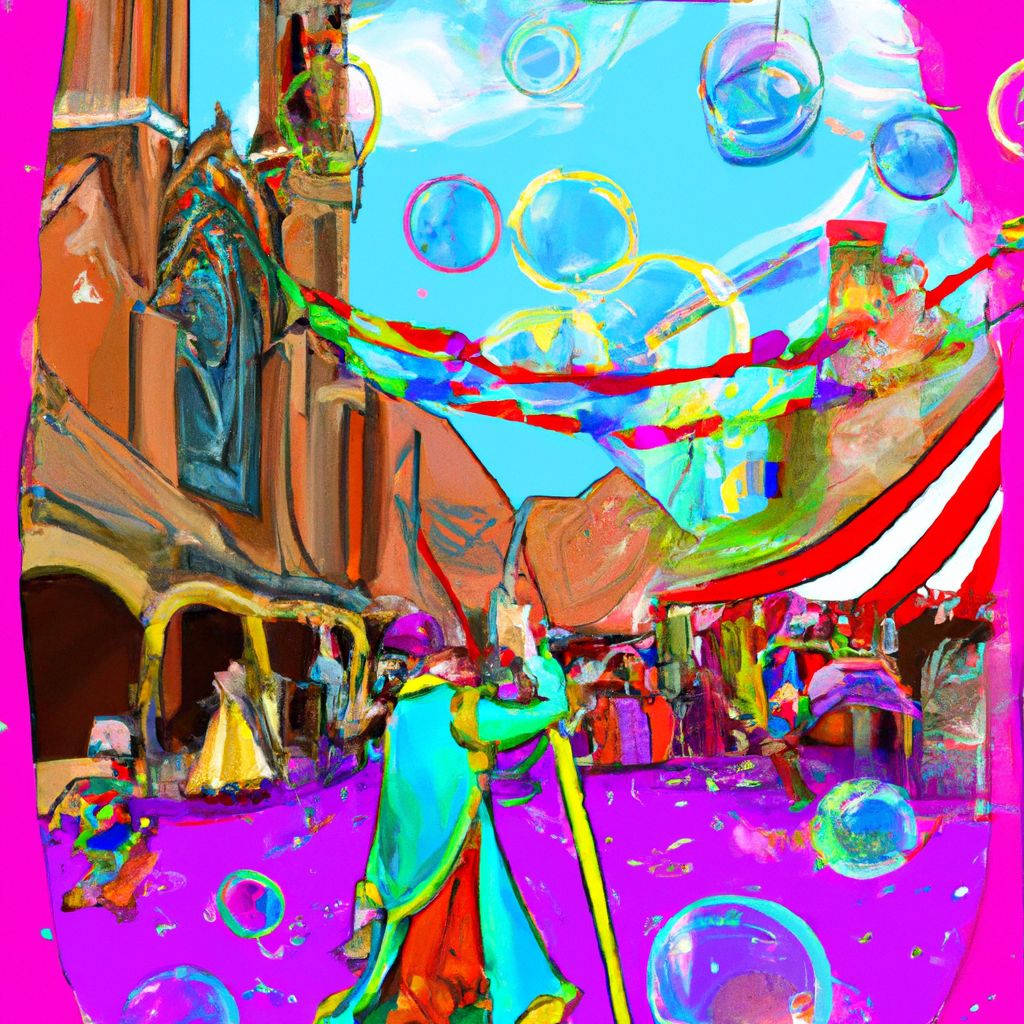
Bubble blowing, once a casual pastime, has swelled into a vibrant form of entertainment, captivating audiences worldwide. Street performers, with their massive wands and buckets of soapy water, can draw crowds by creating huge, iridescent bubbles that dance through the air. These impromptu displays of bubble artistry are a common sight in public spaces, from city squares to seaside promenades, enchanting passersby with the fluid ballet of bubbles.
The art of bubble entertainment has also given rise to professional bubble artists who have elevated this activity to a performance art. These artists employ a variety of tools and techniques to sculpt bubbles into extraordinary shapes, from delicate bubble chains to smoke-filled orbs and even encapsulating objects or people within a single, colossal bubble. The mastery involved in these performances is a blend of precise movement, breath control, and an intimate understanding of the soap medium.
Bubble performances have found their way into circuses and theatrical productions, adding a magical element to the spectacle. Cirque du Soleil, among other modern circuses, has incorporated bubble artistry into their shows, using it to create visual narratives that complement the acrobatics and storytelling. In theater, bubbles can set the scene, symbolize emotions, or simply add a layer of visual wonder to the performance.
The progression of bubble blowing into a recognized form of entertainment speaks to the endless human fascination with this ephemeral art. Whether as a street performance or a choreographed theatrical work, bubbles continue to captivate, inspire, and entertain, transcending their soapy origins to become a celebrated art form.
Commercialization of Bubble Blowing

The commercialization of bubble blowing has played a significant role in its proliferation as a popular pastime. The introduction of pre-made bubble solution and wands to the market democratised the joy of bubble blowing, making it accessible to everyone without the need for homemade concoctions.
In the early 20th century, the inception of brands dedicated to bubble-making toys marked a new era in the industry. Companies like Chemtoy began selling bubble solution in the 1940s, but it was the brand Wham-O that popularized bubble blowing on a massive scale with the release of their product Bubble Thing in the 1980s. This innovation allowed for the creation of bigger and more robust bubbles than ever before, sparking a wave of excitement and interest in bubble blowing as a hobby.
The impact of commercialization on bubble blowing has been profound. The availability of affordable, ready-to-use bubble solutions and a variety of wands has made bubble blowing a ubiquitous activity at children’s parties, parks, and family gatherings. It has also spurred the development of specialized bubble toys, from automated bubble machines to novelty wands that create bubbles in unique shapes and sizes.
Commercialization has not only increased the visibility and popularity of bubble blowing but has also led to innovation in the field, with companies competing to create the most durable, colorful, and impressive bubble products. This has ensured that bubble blowing remains a dynamic and ever-evolving form of play, entertainment, and artistic expression.
Innovations in Bubble Blowing

Innovations in bubble blowing have continually expanded the boundaries of this enchanting activity. The creation of bubble machines is one such advancement that has transformed bubble blowing from an individual endeavor to a spectacle capable of filling entire spaces with swirling, floating bubbles. These machines range from small, battery-operated models for home use to large professional-grade machines used in events and performances, effortlessly producing thousands of bubbles with the push of a button.
Giant bubble wands have also made waves in the world of bubble blowing. These oversized wands, often paired with specially formulated bubble solutions, allow both amateurs and professionals to create enormous bubbles that can span several feet in diameter. This has not only elevated the visual impact of bubble blowing but has also introduced a new level of engagement as onlookers watch in awe at these massive, undulating spheres.
Novel bubble shapes are another area where creativity and innovation have taken flight. With the use of custom tools and wands, bubble artists can now create bubbles in an array of shapes, such as cubes, caterpillars, and even carousel-like structures. These intricate designs often involve complex manipulations and a deep understanding of the soap film's properties.
Bubble performances have also grown more sophisticated by combining artistry with technology. Some artists incorporate lasers, lighting effects, and music to enhance the sensory experience of their bubble displays. Others use smoke or helium to create bubbles with unexpected behaviors, such as rising rapidly or lingering on surfaces, adding an element of surprise and delight to their performances.
These innovations in bubble blowing not only captivate audiences but also push the limits of what is possible with soap, water, and a breath of air. They continue to inspire new generations of bubble enthusiasts and artists, ensuring that the art and science of bubble blowing remain a dynamic and evolving field.
Bubble Blowing in Popular Culture
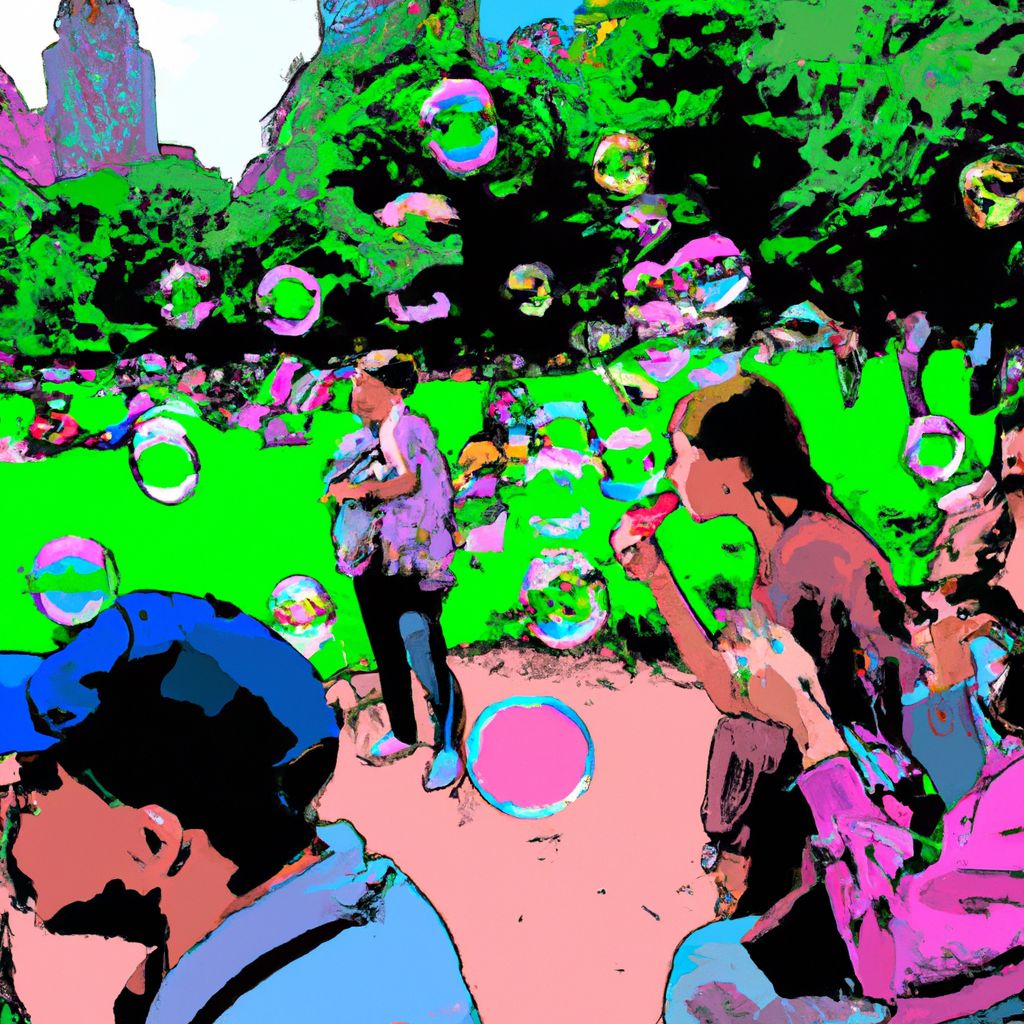
Bubble blowing has frolicked its way into the heart of popular culture, making frequent appearances in films, television shows, and music videos. Its whimsical nature allows it to seamlessly weave into narratives, often used as a tool to signify moments of joy, innocence, or creativity. In cinema, iconic scenes have been punctuated with the presence of bubbles, from the fantastical realms of 'Willy Wonka & the Chocolate Factory' to the poignant storytelling in 'Finding Neverland'.
Television shows, particularly those aimed at children, have long embraced the magic of bubbles. Programs like 'Sesame Street' and 'Teletubbies' feature bubbles in episodes to delight and engage young viewers. The simple act of bubble blowing becomes a visual treat, encapsulating the carefree and exploratory spirit of childhood.
Music videos often utilize bubbles for their aesthetic appeal and the ethereal atmosphere they can create. Artists from across genres have included bubbles in their visual storytelling, adding to the sensory experience of their music.
In the realm of advertising and marketing, bubbles are wielded as powerful symbols of freshness, cleanliness, and fun. They are often used in commercials for cleaning products, bath items, and beverages, where the sight of bubbles conveys a message of effervescence and purity. The inherent attractiveness of bubbles makes them an effective tool for capturing attention and evoking positive emotions in consumers.
The enduring presence of bubble blowing in various facets of popular culture underscores its versatility and universal charm. As a visual motif, it continues to infuse art and commerce with a sense of wonder, nostalgia, and a touch of the fantastical.
The Therapeutic and Educational Uses of Bubble Blowing
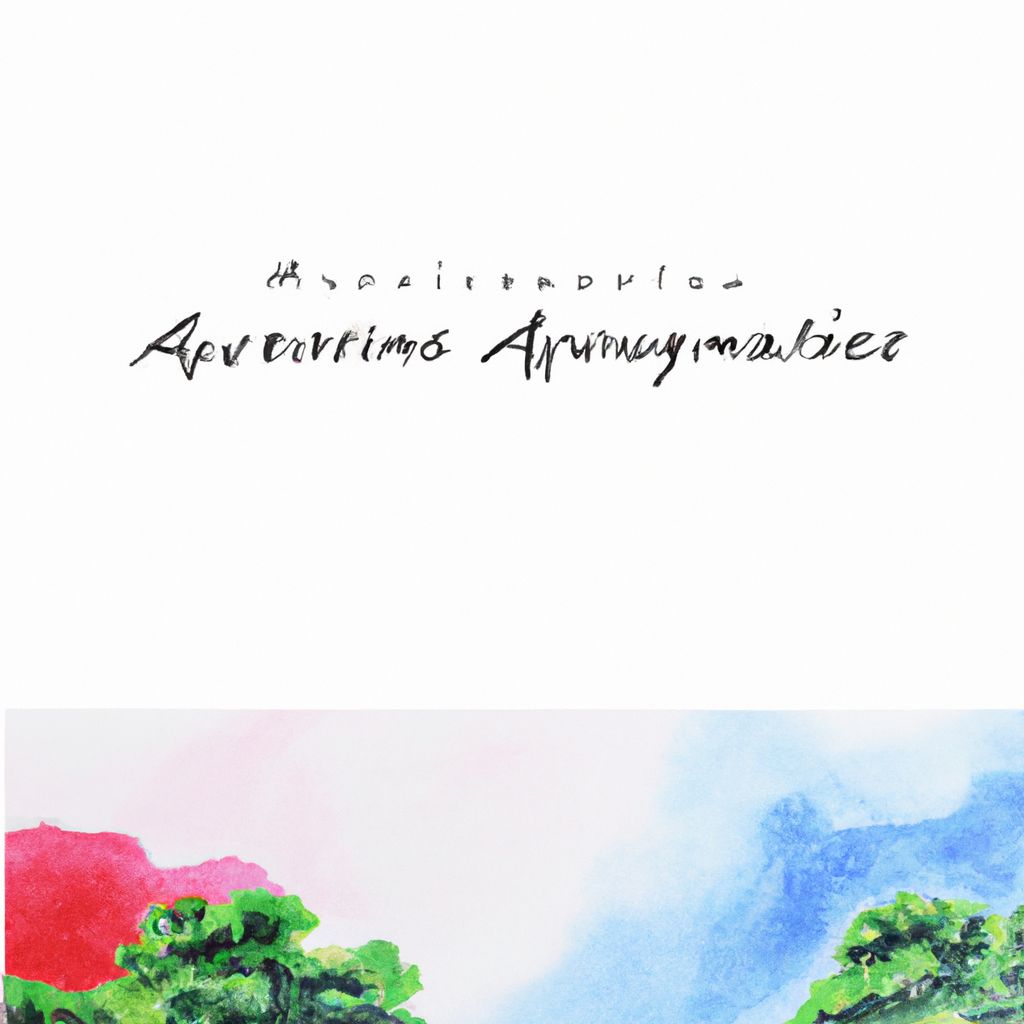
Bubble blowing extends beyond mere entertainment, serving as a therapeutic tool and an educational medium. The act of blowing bubbles requires a controlled breathing pattern, similar to techniques used in relaxation and mindfulness practices. This focused breathing can help mitigate stress and anxiety, and the visual delight of watching bubbles form and float away can be quite meditative, providing a gentle distraction from the rigors of daily life.
Therapists often incorporate bubble blowing into sessions with both children and adults to encourage calmness and to aid in the development of motor skills and breath control. In occupational therapy, for example, blowing bubbles can be an exercise for individuals with sensory processing disorders, helping them engage with their environment in a controlled and enjoyable way.
In educational settings, bubble blowing is a playful yet powerful way to teach children fundamental concepts in physics and chemistry. Through bubbles, they can learn about properties like surface tension, elasticity, evaporation, and light refraction. Bubbles can also be used to explain the geometrical concept of spheres and how three-dimensional shapes occupy space. Experiments with homemade bubble solutions can introduce children to the scientific method, hypothesizing what ingredients create the strongest or largest bubbles and testing their theories.
Additionally, bubble blowing activities can foster teamwork and social skills among students. Group projects involving bubble art or bubble performance require communication, planning, and cooperation, turning a simple activity into a collaborative and educational experience.
From a therapeutic technique to an educational aid, bubble blowing serves as a testament to the multifaceted nature of this simple pastime. It not only provides enjoyment but also offers avenues for growth, learning, and well-being.
The Future of Bubble Blowing

The future of bubble blowing sparkles with potential, buoyed by technological advancements and a growing appreciation for its artistic and therapeutic value. We may anticipate innovations that could revolutionize the activity, such as advanced bubble solutions that extend the lifespan of bubbles or allow them to display a dazzling array of colors without the need for external lighting. Technology could also introduce new ways to blow bubbles, perhaps through devices that enable precision control over the size and shape of bubbles or integrate augmented reality to create interactive bubble experiences.
As an art form, bubble blowing is poised to become even more sophisticated. Artists might harness cutting-edge tools to create bubbles that can withstand touch or incorporate them into multimedia art installations. The future could also see the rise of more elaborate bubble performances, with synchronized bubble art becoming a genre of performance akin to synchronized swimming.
Environmental considerations are becoming increasingly important, and the bubble blowing industry is no exception. There is a growing movement towards eco-friendly bubble solutions, free from harmful chemicals and packaged in biodegradable or recyclable materials. Manufacturers may invest more in research and development to create sustainable bubble-blowing products that do not compromise on quality or the environment.
Overall, the essence of bubble blowing, with its combination of simplicity and complexity, ensures its evolution will continue to enchant and engage. It will likely remain a source of joy, a conduit for learning, and a canvas for artistic expression, all while adapting to the changing landscapes of technology and environmental sustainability.



